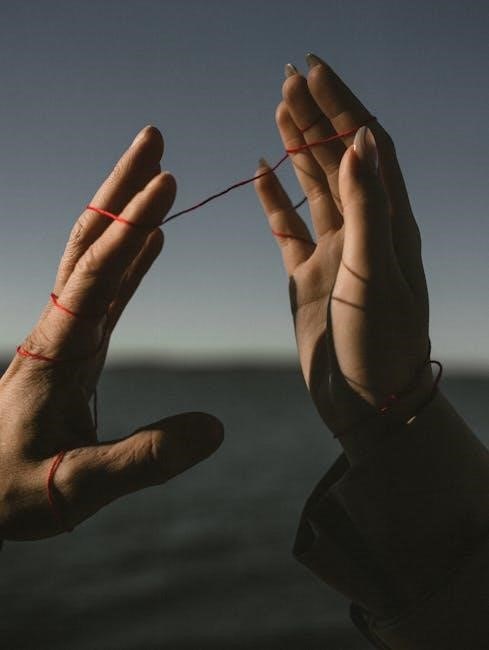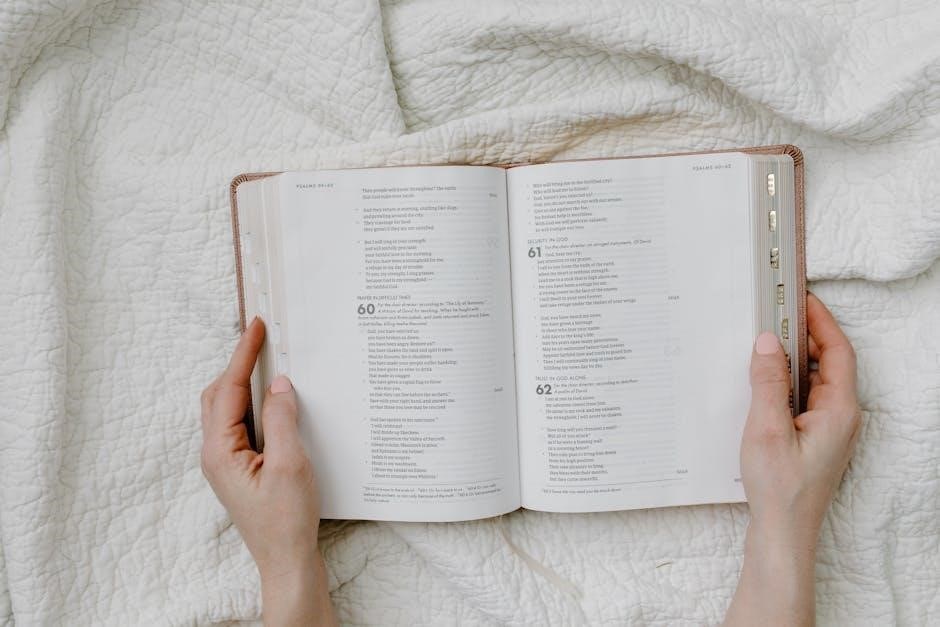Missouri Star Quilt Co, led by Jenny Doan, offers expert quilting tutorials, focusing on binding techniques. Their guides cover machine and hand-binding, providing clear, step-by-step instructions for all skill levels, ensuring professional finishes and creative customization options for every quilter.
Overview of Missouri Star Quilt Co and Their Tutorials
Missouri Star Quilt Co, founded in 2008 by the Doan family in Hamilton, Missouri, specializes in quilting supplies and tutorials. The company gained fame through its YouTube channel, where Jenny Doan and her family share beginner-friendly quilting techniques. Their binding tutorials are particularly popular, offering step-by-step guidance for both machine and hand-binding methods. The tutorials emphasize simplicity, creativity, and accessibility, catering to quilters of all skill levels. Missouri Star Quilt Co’s resources include precut fabrics, tools, and detailed instructions, making it a go-to destination for quilters worldwide.
Importance of Binding in Quilting
Binding is a crucial step in completing a quilt, serving as both a decorative finish and a protective edge. It prevents fraying, adds durability, and enhances the quilt’s aesthetic appeal. Proper binding techniques ensure a professional look, whether using machine or hand-binding methods. Binding also allows for creative expression, enabling quilters to personalize their projects with coordinating or contrasting fabrics. Missouri Star Quilt Co tutorials emphasize the significance of binding, offering detailed guidance to master this essential skill for any quilt project.

Machine Binding Tutorials by Jenny Doan
Jenny Doan’s machine binding tutorials simplify complex techniques, offering efficient methods for consistent results. Her lessons cater to all skill levels, making machine binding easy and accessible.
Tools and Materials Needed for Machine Binding
To successfully complete machine binding, gather essential tools and materials. These include a sewing machine, rotary cutter, mat, and ruler for precise fabric cutting. A binding tool or lapel stick helps manage fabric strips, while wonder clips securely hold binding in place. Steam-a-Seam is optional for pre-attaching strips. Use high-quality fabric for binding strips, ensuring they match or complement your quilt’s design. These tools streamline the process, ensuring a professional finish and making machine binding efficient and enjoyable.
Step-by-Step Guide to Machine Binding
Begin by cutting fabric strips for binding, typically 2.5 inches wide. Sew strips together at a 45-degree angle, pressing seams open. Attach the binding to the quilt edges using a 1/4-inch seam, starting with the sides and then the top and bottom. Miter corners for a polished look. Fold the binding over and sew in place, ensuring it wraps evenly around the quilt. Use clips to hold fabric steady and maintain consistent tension for a professional finish. This method ensures a durable, attractive binding with minimal effort.
Tips for Achieving Professional-Looking Machine Binding
For a polished finish, use a binding tool to maintain fabric alignment and prevent bunching. Press seams flat to ensure crisp folds. Align binding edges with the quilt carefully to avoid puckering. Use matching thread colors for a seamless look. Sew in small, controlled sections, backstitching at starts and ends for durability. Trim excess fabric close to the stitching line. Utilize Wonder Clips to secure layers, ensuring even wrapping. Steam pressing after sewing helps set the binding firmly. These techniques ensure a clean, professional appearance for your machine-bound quilts.

Hand Binding Tutorials by Jenny Doan

Jenny Doan’s hand binding tutorials offer a comprehensive guide to finishing quilts by hand. Her step-by-step instructions cover preparing binding strips, sewing, and securing the final stitch for a professional look.
Tools and Materials Needed for Hand Binding
To begin hand binding, gather essential tools: a sewing needle, thimble, scissors, and hand-sewing needles. Fabric for binding strips should be pre-washed and cut into 2.5-inch wide strips. Mitered corners ensure a clean finish. Optional tools like wonder clips can help align strips. Jenny Doan recommends using a lapel stick for precise folding. Steam-a-Seam 2 aids in attaching strips without pins. These materials ensure a smooth, professional hand-binding process for your quilt.
Step-by-Step Guide to Hand Binding
Begin by preparing your binding strips, ensuring they are pre-washed and cut to 2.5-inch widths. Attach the strips to the quilt edges, aligning them carefully. Fold the strips at the corners to create mitered edges for a professional finish. Hand-sew the binding in place using a needle and thread, securing each stitch tightly. Pay special attention to corners, sewing slowly to maintain accuracy. Use wonder clips to hold the binding steady if needed. Complete by sewing the final seam, ensuring a seamless join. This method ensures a beautiful, hand-finished quilt.
Tips for Achieving Professional-Looking Hand Binding
Achieving professional-looking hand binding requires attention to detail. Use high-quality fabric and tools like wonder clips to secure the binding. Press strips before sewing and align them precisely with the quilt edges. Employ a thimble for better control and use thread matching the fabric. Maintain consistent, tight hand stitches and miter corners neatly. Sew continuously around the quilt to prevent bulk and ensure a smooth finish. Finally, inspect the binding for any loose stitches and tighten them for a polished look.

Special Binding Techniques
Explore advanced binding methods like flange binding for decorative edges and bias binding for curved seams, as demonstrated by Missouri Star Quilt Co. tutorials.

Flange Binding Tutorial
Jenny Doan’s flange binding tutorial teaches a decorative technique using a flange strip to add a contrasting fabric edge. Perfect for baby quilts or vibrant accents, this method involves sewing the flange strip, folding it to reveal the decorative edge, and attaching it seamlessly. The tutorial guides quilters through preparing the strip, aligning it with the quilt edges, and securing it for a polished finish. Ideal for adding a subtle yet stylish detail to any quilt project, this technique enhances both traditional and modern designs with ease and precision.
Bias Binding for Curved Edges
Bias binding is a specialized technique for finishing curved quilt edges, demonstrated by Natalie from Missouri Star Quilt Co. She explains how to cut and assemble bias strips from fabric, ensuring they conform smoothly to curved or scalloped edges. The tutorial highlights the importance of stretching the binding slightly while sewing and using clips to maintain shape. This method eliminates puckering and creates a professional, polished finish for circles, curves, or decorative borders, making it a must-learn skill for quilters tackling intricate designs.
The Binding Tool Star Quilt Tutorial
Jenny Doan of Missouri Star Quilt Co introduces the Binding Tool Star Quilt Tutorial, a creative project that combines binding techniques with star quilt patterns. This tutorial demonstrates how to use the Binding Tool to achieve perfect mitered corners and secure bindings. It’s an easy and beautiful way to incorporate binding into your quilt design, suitable for all skill levels. The tutorial highlights how the Binding Tool simplifies the process, ensuring a professional finish while adding a decorative touch to your quilts.

Self-Binding Quilt Tutorials
Jenny Doan teaches how to create a self-binding quilt using 2.5″ strips, a quick and modern method. Learn to finish quilts efficiently with a polished look.
What is Self-Binding?
Self-binding is a technique where the quilt’s backing fabric is folded to the front to create a decorative border, eliminating the need for traditional binding strips. This method saves time and creates a clean, polished finish. Jenny Doan demonstrates how to achieve this by using pre-cut fabric strips or extra-wide backing material, ensuring a seamless and professional-looking edge without additional binding tools or complicated steps. This technique is ideal for quilters seeking a modern, efficient approach to finishing their projects.
How to Create a Self-Binding Quilt
To create a self-binding quilt, start by sewing your quilt top, batting, and backing together. Trim the excess batting and backing, leaving a 1/4-inch seam. Fold the backing fabric over the edges to the front, ensuring it aligns with the quilt top. Pin in place and sew along the folded edge. For a professional finish, add a topstitch close to the seam. This method, popularized by Jenny Doan, is quick and efficient, perfect for beginners and experienced quilters alike. It eliminates the need for separate binding strips, offering a clean, modern look.

Common Mistakes in Quilt Binding
Common mistakes include uneven seam allowances, insufficient pinning, and improper mitering of corners. Jenny Doan’s tutorials provide tips to avoid these errors and achieve a polished finish.
Mistakes to Avoid in Machine Binding
Common errors in machine binding include not pressing seams properly, using incorrect stitch lengths, and failing to align binding strips accurately. Jenny Doan emphasizes the importance of maintaining consistent tension and ensuring the binding lies flat to prevent puckering. Additionally, rushing through the process can lead to misaligned corners or uneven stitching. By taking time to prepare materials and carefully guiding the fabric, quilters can achieve a smooth, professional finish with machine binding.
Mistakes to Avoid in Hand Binding
Common mistakes in hand binding include inconsistent stitch length, not maintaining a steady tension, and failing to align the binding evenly. Jenny Doan advises against rushing the process, as this can lead to loose stitches or puckering. Additionally, not trimming excess fabric before stitching can result in bulkiness. Using a thimble and keeping the fabric taut helps prevent these issues. Proper preparation, such as pre-creasing the binding, ensures a smooth and professional finish when hand binding a quilt.

Advanced Binding Techniques
Explore creative binding methods like striped and scalloped edges, adding unique flair to your quilts. Jenny Doan shares tips for precision and visual impact in these techniques.
Striped Binding
Striped binding adds a vibrant, dynamic edge to quilts. Jenny Doan demonstrates how to cut and sew striped fabric into binding strips, ensuring pattern alignment for a cohesive look. Tips include matching stripe widths to quilt size and using mitered corners for a polished finish. This technique enhances visual interest and complements quilt designs, making it a versatile choice for quilters seeking to add a decorative touch to their projects.
Scalloped Binding
Scalloped binding is a charming technique for adding a decorative edge to quilts with curved or wavy borders. Jenny Doan’s tutorials demonstrate how to create this elegant finish by sewing binding strips to scalloped edges. The process involves precision cutting and sewing to ensure smooth curves. Using a bias binding tool or template can help achieve accurate results. This method adds a unique, polished touch to quilts, making it ideal for projects requiring a softer, more intricate border design.
Missouri Star Quilt Co’s binding tutorials, led by Jenny Doan, provide comprehensive guidance for mastering machine and hand-binding techniques. These tutorials are designed to help quilters of all skill levels achieve professional finishes and explore creative customization options, ensuring every quilt project is completed with precision and style.
Final Tips for Mastering Quilt Binding
To master quilt binding, always use the binding tool for precise mitered corners and smooth attachment. Press binding strips before sewing for a crisp finish. Choose fabrics that complement your quilt’s design. Practice on small projects to build confidence. Watch Jenny Doan’s tutorials for expert guidance. Use wonder clips to secure binding in place. Sew slowly and evenly, especially around corners. Trim excess fabric carefully. For hand-binding, use a sharp needle and invisible stitches. Experiment with striped or scalloped binding for unique finishes. With patience and practice, you’ll achieve professional results every time.